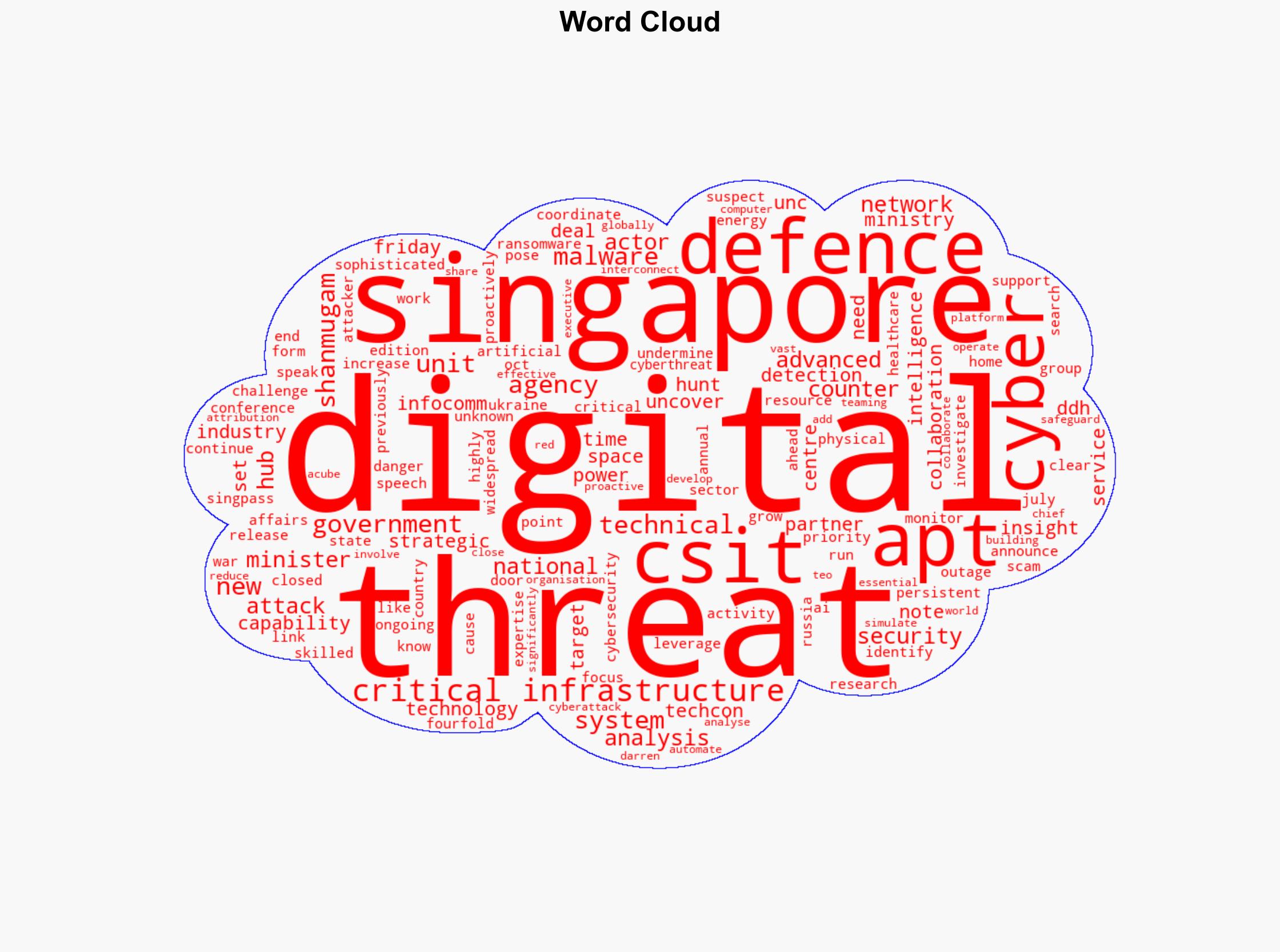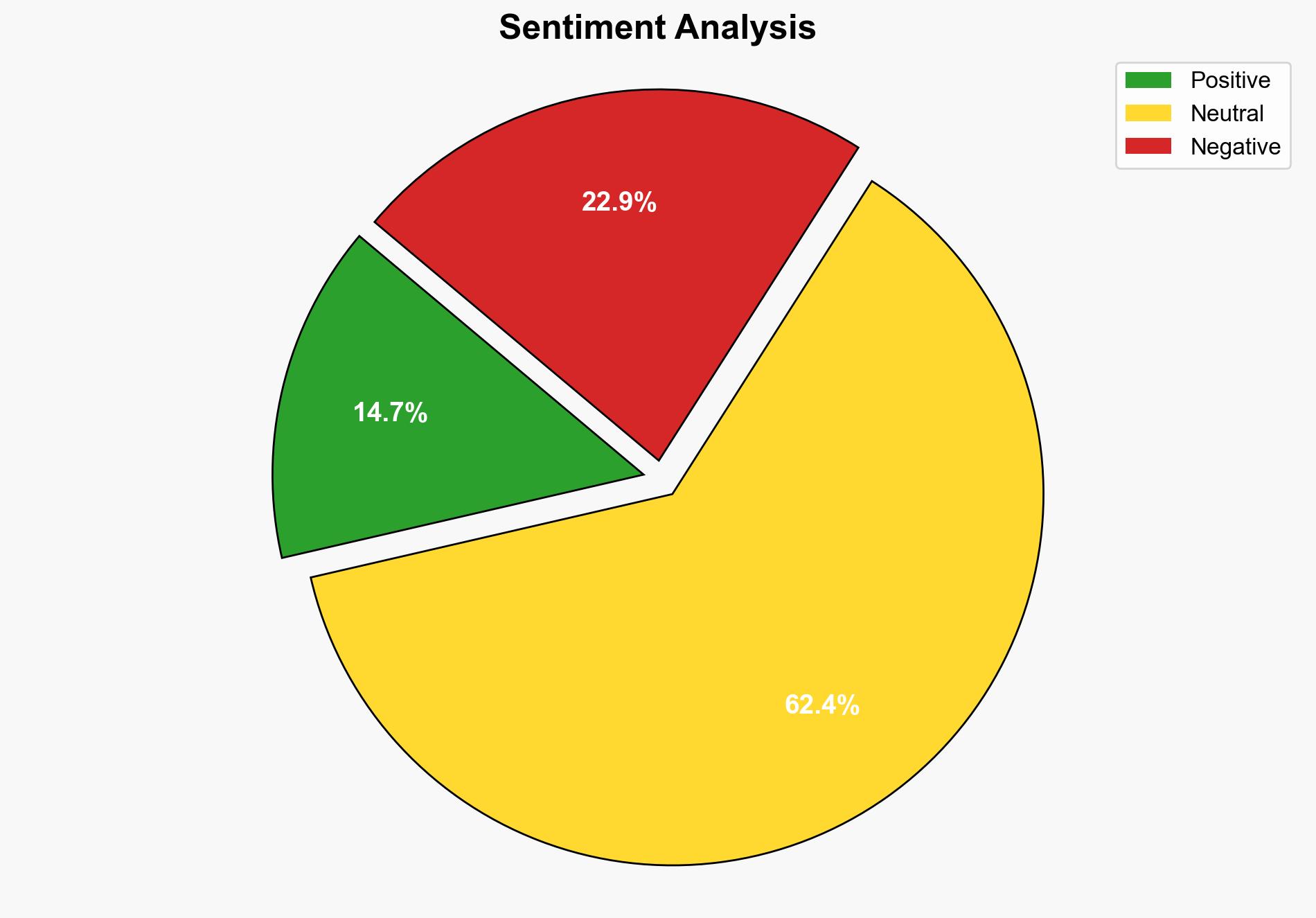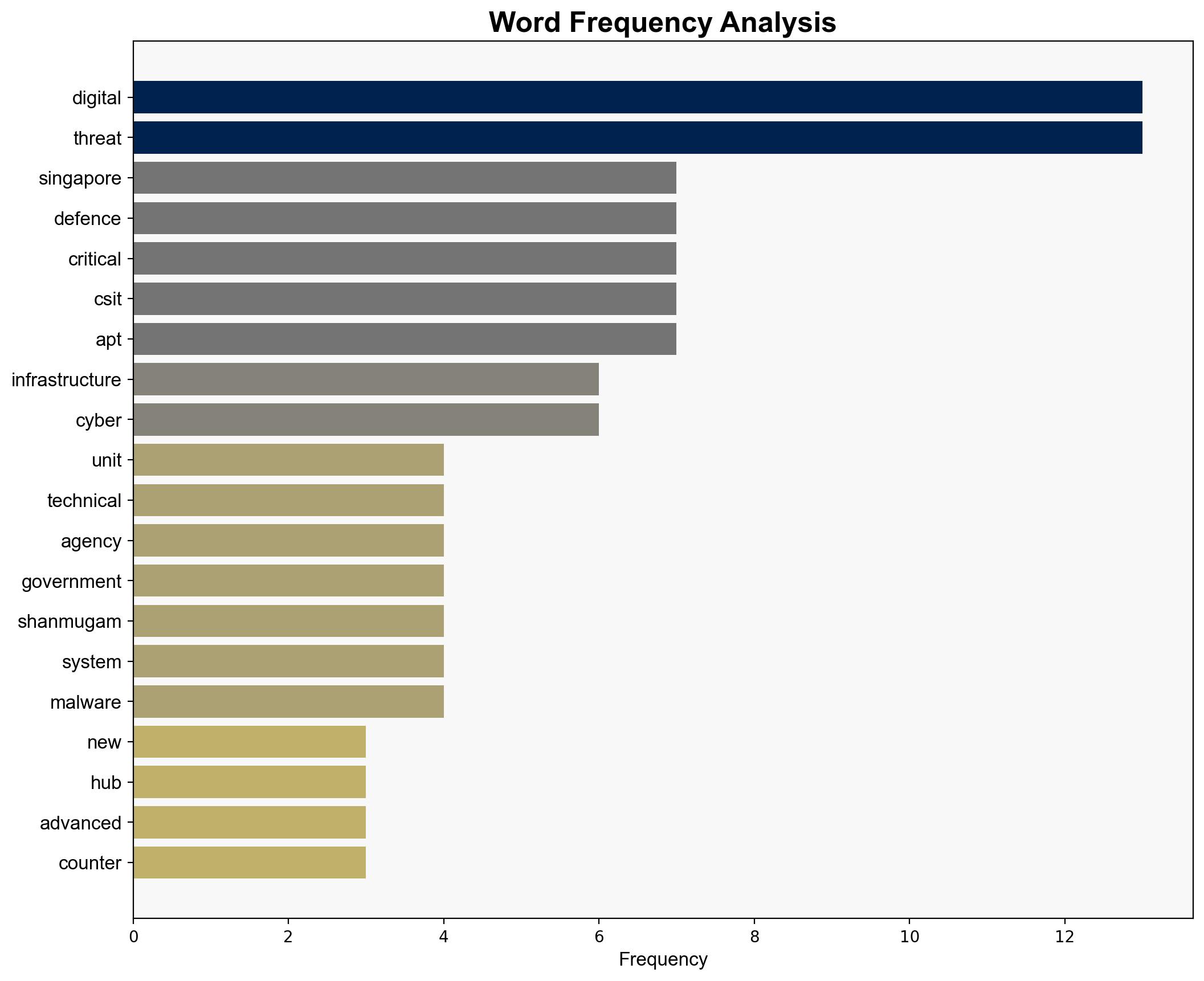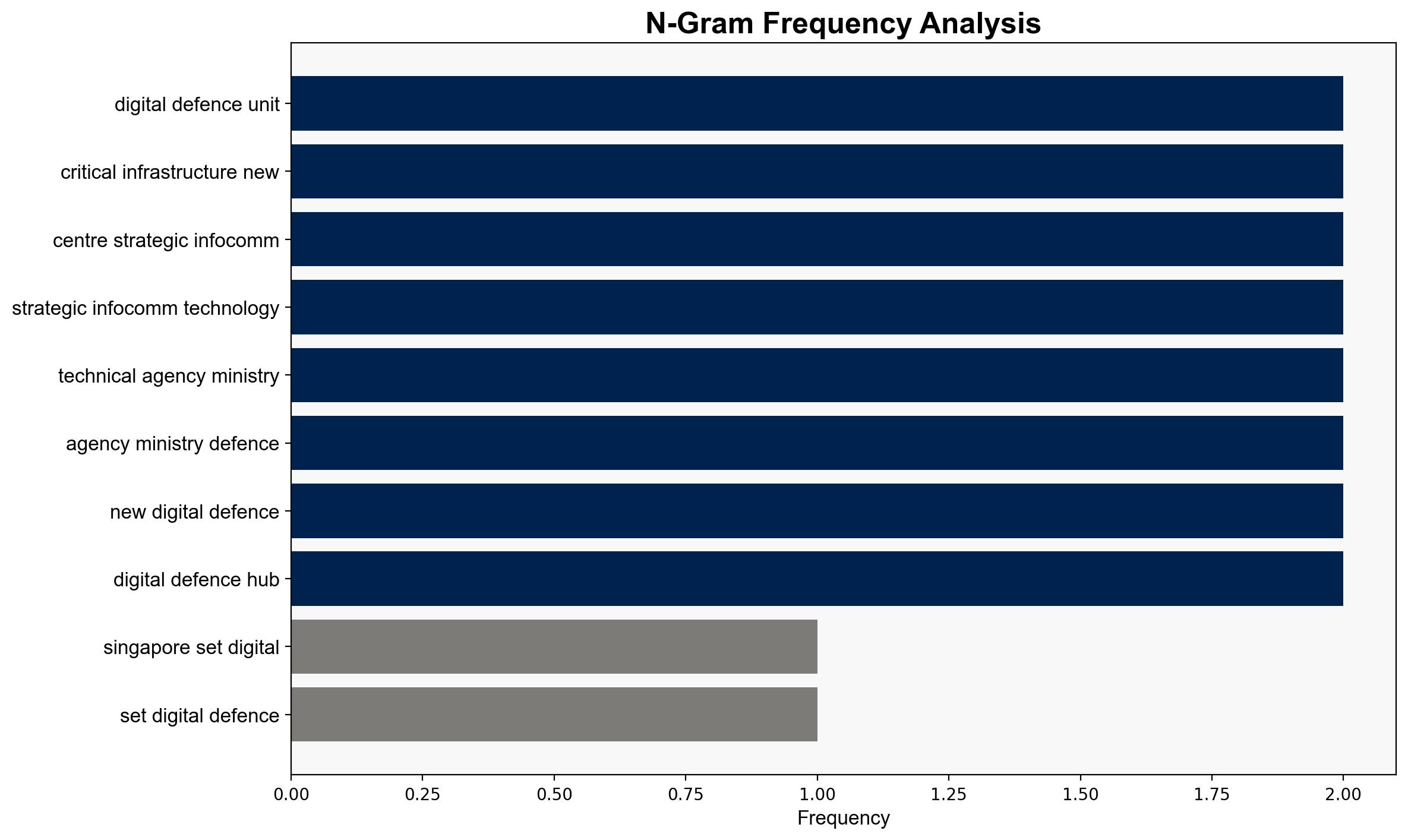Singapore sets up digital defence unit to deal with threats to critical infrastructure – CNA
Published on: 2025-10-17
Intelligence Report: Singapore sets up digital defence unit to deal with threats to critical infrastructure – CNA
1. BLUF (Bottom Line Up Front)
The establishment of Singapore’s digital defence unit is a strategic move to counter increasing cyber threats to its critical infrastructure. The most supported hypothesis is that this initiative is primarily a defensive measure to safeguard national security amidst rising global cyber threats. Confidence level: High. Recommended action: Enhance international collaboration and intelligence sharing to bolster cybersecurity efforts.
2. Competing Hypotheses
Hypothesis 1: The digital defence unit is a proactive measure to protect Singapore’s critical infrastructure from increasing cyber threats, particularly from state-linked APT groups.
Hypothesis 2: The unit is also intended to position Singapore as a regional leader in cybersecurity, potentially serving as a deterrent to cyber adversaries.
Using the Analysis of Competing Hypotheses (ACH) 2.0, Hypothesis 1 is better supported due to the explicit focus on countering APT threats and the historical context of increased cyberattacks linked to geopolitical tensions. Hypothesis 2, while plausible, lacks direct evidence in the source text but remains a strategic consideration.
3. Key Assumptions and Red Flags
Assumptions include the belief that APT threats will continue to rise and that Singapore’s infrastructure is a primary target. Potential cognitive biases involve overestimating the deterrent effect of the new unit. A red flag is the lack of detailed information on specific threats or adversaries, which could indicate an underestimation of other cyber threat vectors.
4. Implications and Strategic Risks
The formation of the digital defence unit suggests a recognition of cyber threats as a national security priority. This move could escalate regional cybersecurity dynamics, prompting similar initiatives by neighboring countries. Economically, it may attract cybersecurity investments but could also increase operational costs for maintaining robust defences. Geopolitically, it positions Singapore as a proactive player in cybersecurity, potentially affecting its diplomatic relations.
5. Recommendations and Outlook
- Enhance international collaboration with cybersecurity agencies to share intelligence and best practices.
- Invest in advanced cybersecurity technologies and workforce training to maintain a competitive edge.
- Scenario-based projections:
- Best-case: Successful deterrence of cyber threats, leading to a secure digital environment.
- Worst-case: Escalation of cyberattacks, overwhelming current capabilities.
- Most likely: Gradual improvement in cybersecurity posture with periodic challenges from sophisticated threat actors.
6. Key Individuals and Entities
K. Shanmugam, Darren Teo, Centre for Strategic Infocomm Technology (CSIT), Ministry of Defence, Singapore.
7. Thematic Tags
national security threats, cybersecurity, counter-terrorism, regional focus




